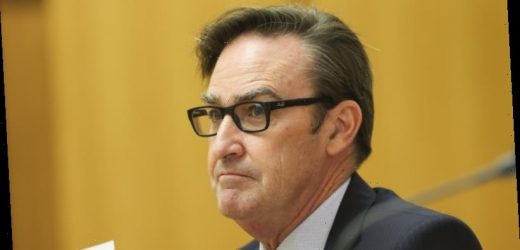The federal Treasury and the Reserve Bank have very different views about the state of the economy – and their disagreement could have real world ramifications for millions of Australians.
Evidence from Treasury secretary Steven Kennedy on Wednesday confirmed the nation’s two key arms of economic policy, fiscal and monetary, are on a collision course that could undermine how well both they have dealt with the coronavirus recession.
Treasury secretary Steven Kennedy says unemployment between 4.5 per cent and 5 per cent will hit the nation’s economic sweet spot. But the Reserve Bank believes it has to be much lower.Credit:Alex Ellinghausen
At the heart of the division is the concept known as the non-accelerating inflation rate of unemployment (NAIRU).
NAIRU is the lowest level of unemployment before an economy starts to run hot, generating inflation and sharp wages growth.
For organisations like the Treasury or the RBA, estimating NAIRU is pivotal to their policy settings. And normally, these two pillars of Australian economic policy have the same estimate.
Dr Kennedy revealed to a Senate committee that his department, the one that advises the government on economic policy, reckons NAIRU is somewhere between 4.5 per cent and 5 per cent.
But just a fortnight ago, RBA governor Philip Lowe entertained the case that this unemployment sweet spot could be below 4 per cent.
“It’s entirely possible. None of us know,” he said at The Australian Financial Review conference. “What I am sure of is that the unemployment rate needs to be below 5. How far below 5, it’s hard to tell and I certainly hope, and it’s not inconceivable, that we could sustain an unemployment rate in Australia starting with a 3.”
In percentage terms they may sound pretty close. But in the real world they are worlds apart.
Household finances director with the Grattan Institute, Brendan Coates, estimates the difference between a jobless rate of 4.5 per cent and 3.5 per cent is about 300,000 people in work.
Not only does it mean far fewer people with an income, it would also mean less pressure on wages growth which has been a major economic headwind since 2012.
“A big reason wages stagnated in the lead-up to COVID is that unemployment in Australia was too high,” he said. “The jobless rate averaged 5.5 per cent over the five years leading into COVID – higher than the level needed to spark greater competition among employers for workers and drive up wages.”
“If wages don’t start growing again by 2024 – as the Reserve Bank currently forecasts – we’re talking about a lost decade as far as Australians’ living standards are concerned.”
Treasurer Josh Frydenberg has said repeatedly he will begin budget repair when the jobless rate is “comfortably” below 6 per cent. Most analysis suggests he is looking at 5.5 per cent.
But the RBA, which already has official interest rates at 0.1 per cent while being in the middle of a $200 billion quantitative easing program, believes it needs a jobless rate at or below 4 per cent to get inflation and wages ticking up.
It could ordinarily offset tighter fiscal policy with lower interest rates. But it can’t do that anymore.
The bank hasn’t hit its inflation target since Tony Abbott was prime minister while both it and Treasury have over-estimated wages growth since Julia Gillard was in power.
The notion that fiscal policy could start being tightened at a jobless rate of 5.5 per cent while monetary policy is flat to the floor trying to get unemployment down below 4 per cent is an economic disaster in the making.
And that disaster would be felt in the hip pockets of millions of Australians.
Most Viewed in Politics
From our partners
Source: Read Full Article



